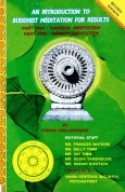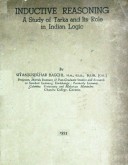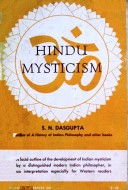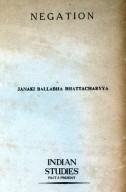FOREWORD
In the world of today, people are living under stress and strain as a result of craving, hunger, overambition, fear, anxiety and lack of safety. A lot of people are facing malnutrition or food shortages: in addition, there are many who are homeless and wander aimlessly. Crime rates, narcotic trafficking and drug addiction cases are also on the increase. There are also many instances of serious conflicts leading to the destruction of numerous lives and properties. What are the reasons behind all these?
Although December 8, 2001 was the 100th anniversary of the Nobel Peace Prize, there have been more wars than peace in the past 100 years. The question is how to counter effectively these patterns of violence. The example of Mahatma Gandhi’s peaceful alternative offers a poignant reminder that we can do better than repeating past wars and terrorism. This book explains a way each of us can improve our own loving kindness and promote peace between all people in the world community.
The more technological progress in terms of material wealth is made, the more mental development in terms of spiritual wealth is required; otherwise people can easily become the victims of their own material achievements. This is evident in such a case as environmental pollution which adversely affects physical and mental health, leading to increased suffering as well as the shortening of life.
Problems such as overpopulation are increasing. Birth control, which is an effective means of coping with this problem, has nevertheless been misapplied in certain cases, resulting in a lowered standard of morality and a decline in spiritual values. This can be seen in the indiscriminate use of contraceptive pills or other birth control devices among our youth. As a result of such reckless behavior, the mind often becomes adversely affected, leading to increased unwholesome acts. HIV/AIDS is no. longer just a public health problem, but a global human and social development problem that needs a rigorous strategy for prevention and cure.
An educational system which does not place enough emphasis on moral and spiritual values is one that encourages greediness and rivalry among individuals. At the same time, any system which brings about freedom-without responsibility, discipline, and limitations has an adverse effect on self-control and judgment. This leads to exploitation of others in various forms such as resorting to corrupt practices, engaging in the narcotics trade and the promotion worldwide of commercial sexual exploitation of children, conducting a booming arms business for destructive purposes and seeking domination over others economically, politically or militarily. If these adverse conditions extensively prevail, they can bring about seizures of power and serious conflicts and problems on community, national or international levels. This can be seen in various trouble spots in many parts of the world. Under such circumstances, how can peacefulness and happiness be attained in this world?
We recognize that the world’s population is moving from an Agriculture-based Society to an Industrialized Society and now to an Information Technology Society. We understand that Information Technology (IT) is a vital part of the new globalization trend and has certainly changed human beings especially in self-development and interpersonal relationships. If people in today’s society use IT in a wrong way, such as for cybersex and child pornography, it will be a tool to create misbehavior leading to more crises in social, spiritual and in the spheres of knowledge and wisdom values. This is a most provocative disaster for each nation in the world community. An enterprising society must search for the ways reflecting pros and cons, to cope effectively with the dichotomies of the changing world; that is, destructive progress versus creative sustainability in the era of globalization.
First of all, it should be realized that it is now time for us to promote urgently the spiritual values, which have been fast deteriorating due to increasing emphasis being placed on material wealth. Dire consequences are likely in the near future if nuclear weapons and missiles continue to be produced in large quantities with higher destructive power. Being well aware of this great danger, should we not exert every effort to enhance spiritual wealth for the happiness and the wholesome progress of mankind?
People often overlook the importance of developing their minds; they place too much emphasis on their physical comforts without realizing how much the mind affects the body.
Modern science has recognized that the mind can produce a kind of energy like that of electricity with the capability of controlling and stimulating the brain to perform its functions relating to thinking, remembering and feeling and to physical activities. The brain serves as a medium for the mind as opposed to performing these activities directly.
In addition, it has been proven that through effective meditation the mind is able to alleviate or overcome physical suffering. Hippocrates, the Greek physician who is considered the father of medicine, said that it is the natural energy within ourself that can cure various illnesses effectively.
According to the well-known Dr. Charles Mayo, worry and anxiety will affect blood circulation, the heart, various glands and the whole nervous system. This means that mental stress is an important cause of various illnesses such as peptic ulcer, high blood pressure, asthmatic attack, diabetes, heart disease and arthritis.
Many cases of illnesses with unknown and undetectable causes originate in the mind.
If we realize the effect of the mind on the body, we are better able to control wisely the mind and prevent it from producing adverse effects; instead, the mind will produce good and wholesome effects. In other words, the mind should be effectively controlled in a way similar to the control of fire, for use in a constructive manner.
The wonders of the mind are not something beyond belief, yet few people are aware of the mind’s great potential. Meditation is the first important step in the development of mental power. Tranquil Meditation will make the mind peaceful, stable and secure. It is an effective way of accumulating and utilizing mental energy with mindful awareness. On the other hand, Insight Meditation will ultimately bring about the eradication of all suffering in life, leading to the attainment of “Perpetual Happiness” (Nibbãna), through the accumulation and development of the highest level of wisdom. Tranquil Meditation and Insight Meditation are therefore both helpful in our daily living and contribute to success in life for every human being.
Regular meditation practice, which is a mental exercise, must be practiced daily in the same way as physical exercise. Both should go together to balance one’s life and build a strong body and a healthy mind. In this way, one will be able to develop wisdom and mindfulness in one’s daily life and relieve or get rid of the feelings and thoughts which give rise to suffering, anxiety and fear.
It has been accepted medically that meditation practice is very beneficial to human life in terms of promoting sound mental health. It is currently being used for the prevention and treatment of mental illness.
In reality, the nature of the mind and mental practice and development in the form of Tranquil Meditation and Insight Meditation which are the essence and basis of Buddhist Advanced Science (Abhidhamma), was introduced over 2,500 years ago. It is a great pity that a lot of people have not made effective use of these ancient discoveries because they lack understanding regarding the real nature’ of the mind and mental energy.
It is now time for all those who have not tried to seek knowledge within themselves to turn toward the study and practice of Buddhist Science in order to gain real insight into their own mind and life. This in turn will bring about subtle tranquility and happiness which everyone is seeking and will increase mental powers amazingly. These effects can be achieved by the meditator only through his/her own efforts. As the Buddha said, we must work out our own salvation with diligence.
Vanna Kovitaya, M.D.,
Psychiatrist
Thailand 2003/2546
CONTENTS
PART ONE: TRANQUIL MEDITATION
- INTRODUCTION
- BACKGROUND AND THEORY
CHAPTER 1 – WHAT IS TRANQUIL MEDITATION
CHAPTER 2 – TYPES OF CONCENTRATION
CHAPTER 3 – GENERAL BENEFITS GAINED FROM TRANQUIL MEDITATION PRACTICE…
CHAPTER 4 – FIVE MENTAL FACTORS OF CONCENTRATION
CHAPTER 5 – MENTAL OBSTACLES TO TRANQUIL MEDITATION
III. PROCEDURES AND APPLICATIONS
CHAPTER 6 – METTÃ (LOVING-KINDNESS) MEDITATION
CHAPTER 7 – ÃNÃPÃ (BREATHING) MEDITATION
CHAPTER 8 – ODÃTA KASINA (WHITE OBJECT) MEDITATION
- CONCLUSION
PART TWO: INSIGHT MEDITATION
- INTRODUCTION
- BACKGROUND AND THEORY
CHAPTER 9 – WHAT IS INSIGHT MEDITATION
- The unique characteristic of Insight Wisdom (Vipassanã Pannã)
- A full and direct realization of Insight Wisdom (Vipassanã Pannã)
- The ultimate reality of life as realized by Insight Wisdom (Vipassanã Pannã)
- The reason why the realized ultimate reality of life must occur at the present moment
- Ultimate aim of Insight Meditation
CHAPTER 10 – HOW DOES INSIGHT MEDITATION DIFFER FROM TRANQUIL MEDITATION
- Different meditation objects
- Different levels of concentration
- Different types of wisdom
- Different effects
CHAPTER 11 – GENERAL BENEFITS GAINED FROM INSIGHT MEDITATION PRACTICE.
- Attainment of the “Light of Wisdom” in dispelling the “Darkness of Ignorance” in life
- Elimination of wrong views in life
- Elimination of “Multipliers” of adverse feeling or suffering in life
- Providing the most unique and effective method of relieving mental wandering
- Preventing the adverse and harmful unwholesomeness (Akusala-dhamma) which is about to occur from arising
- Effective weakening or elimination of the power of the past unwholesomeness
- Bringing about the wholesomeness which has not yet risen and intensifying the power of past wholesomeness
- Increasing the effectiveness of wholesome and highly beneficial memory power and the ability to cope effectively with unwholesome and extremely harmful memory power…
- The attainment of a mind with the highest degree and most complete freedom
CHAPTER 12 – MENTAL FACTORS OF INSIGHT MEDITATION……114
- Confidence Power (Saddhãbala)……………. 114
- Effort Power (Viriyabala)…………………….. 119
- Mindfulness Power (Satibala)……………….. 122
- Concentration Power (Samãdhibala)……… 126
- Wisdom Power (Pannabala)…………………. 128
CHAPTER 13 – MENTAL OBSTACLES TO INSIGHT MEDITATION (NĨVARANA)
- Craving for Sensually Pleasurable Objects (Kãmachandanỉvarana)
- Dissatisfaction or Anger (Byãpãdanỉvarana)
- Sleepiness (Thina-middhanỉvarana)
- Mental Wandering and Worrying (Uddhacca-kukkuccanivarana)
- Scepticism (Vicikicchãnìvarana)
- Ignorance (Avijjanlvarana)
III. DIRECT AWARENESS-THE BASIC APPROACH TO PRACTICING INSIGHT MEDITATION
INTRODUCTION
CHAPTER 14 – WHAT IS MEANT BY DIRECT AWARENESS
- The arising of the mind (Javana-citta) without awareness (Sati)
-
The arising of the mind accompanied with awareness (Sati) other than Direct Awareness
- Being often conscious of conventional reality rather than ultimate reality
- Being often conscious of persons or things external rather than internal to oneself
- Being often conscious of the past rather than the present
- Being often influenced by the defilements (Kilesa) of mind such as craving or unwholesome wanting and/or ignorance
- Being with or without accompaniment of wisdom
- The arising of the mind accompanied with Direct
-
Awareness (Satipaflhana)
- Being conscious of ultimate reality as it really is
(1.) M indfulness of Body (Kãyãnupassanã Satipafthana)
(2.) Mindfulness of Feeling (V edanãnupassanã Satipaflhana)
(3.) Mindfulness of Mind (Cittãnupassanã Satipatthãna)
(4.) Mindfulness of Dhamma (Dhammãnupassanã SatipaRhana)
(a.) Mental Obstacles (Nivarana)
(b.) Five Aggregates (Khandha)
(c.) Sense-Organs and Sense-Objects (Ãyatana)
(d.) Seven Constituents of Enlightenment (Bojjhanga)
(e.) The Four Noble Truths (Ariyasacca)
- Being conscious of the present object at the time of its arising
- Being constantly and continually conscious of the object which is ultimate reality
- Being always accompanied with wisdom
- Being pure and free from the influence of defilements (Kilesa)
CHAPTER 15 – GENERAL PROCEDURE OF PRACTICING DIRECT AWARENESS
- Introduction
- Classification of Nãma and Rũpa through the six sense doors
- Nãma and Rũpa through the eye sense door
- Nãma and Rũpa through the ear sense door
- Nãma and Rũpa through the nose sense door
- Nãma and Rũpa through the tongue sense door
- Nãma and Rũpa through the body sense door
- Nãma and Rũpa through the mind sense door
- What should be kept in mind with respect to practicing Direct Awareness
- Basic techniques of practicing Direct Awareness
4.1 Eye sense door
4.2 Ear sense door
4.3 Nose sense door
4.4 Tongue sense door
4.5 Body sense door
4.6 Mind sense door
- General method of applying Direct Awareness in daily life
- Introduction
- Sense perception and human actions
- The application of Direct Awareness in daily life
(1.) General experiences in daily life common to all
(1.1) Awareness of waking up
(1.2) Awareness of bathroom activities
(1.3) Awareness of eating
(1.1.1) Before the meal
(1.1.2) During the meal
(1.1.3) After the meal……250
(1.4) Awareness of bodily feeling
(1.5) Awareness through the ear sense door
(1.5.1) Awareness of an audible object which is desirable
(1.5.2) Awareness of an audible object which is undesirable
(1.6) Awareness through the eye sense door
(1.6.1) Awareness of a visible object which is desirable
(1.6.2) Awareness of a visible object which is undesirable
(1.7) Awareness of major body postures
(1.8) Awareness of verbal actions
(1.8).1 Before speaking
(1.8.2) During speaking
(1.8.3) After speaking
(1.9) Awareness of thoughts
(1.9.1) Awareness of unwholesome thoughts
(1.9.2) Awareness of wholesome thoughts
(1.10) Cultivating awareness before going to sleep
(2.) Specific experiences in daily life pertaining to each individual
(2.1) Experiencing deep sorrow due to the separation from a loved one or loss of status or property to which one is greatly attached
(2.2) Experiencing deep anxiety and worry due to the unreasonable expectation that one’s loved one or the things which one possesses with great attachment, will meet with adverse consequences
(2.3) Experiencing deep frustration and irritation due to one’s desire being seriously obstructed by others
(2.4) Experiencing an unsettled and distracted state of mind due to one’s conflicting desires
(2.5) Experiencing adverse feelings of harmful memory
(2.6) Experiencing fear
(2.7) Experiencing the adverse feeling of insomnia due to one’s mental wandering or being excessively influenced by one’s own craving
- CONCLUSION
- General method of practicing Direct Awareness at a proper place for Insight Meditation
- PROCEDURES AND APPLICATIONS
CHAPTER 16 – INSIGHT MEDITATION-OVERCOMING DISSATISFACTION OR ANGER (DOSA)
- Introduction
- What is to be specifically gained from this Insight Meditation
- Nature of Dosa
- General characteristics of Dosa: Anicca, Dukkha and Anattã
- Specific characteristics of Dos
- Causes of Dosa
- Relationship between Dosa and mental suffering
- Manifestation of Dosa
(1.) “Persuasive” Dosa
(2.) “Non-persuasive” Dosa
- Meditation practice
- What should be kept in mind
- What will the practice lead to
- How to develop the skill of Direct Awareness
(1.) Stage I – Mindfulness of the occurrence of Dosa
(2.) Stage II – Mindfulness of the phasing out of Dosa
(3.) Stage III – Mindfulness of the cycle of Dosa
- CONCLUSION
CHAPTER 17 – INSIGHT MEDITATION-COPING WITH MENTAL SUFFERING
- Introduction
- What is to be specifically gained from this Insight Meditation
- Nature of mental suffering
- General characteristics of mental suffering: Anicca, Dukkha, Anattã
- Specific characteristics of mental suffering
- Causes of mental suffering
- Manifestation of mental suffering
- Meditation practice
- CONCLUSION
CHAPTER 18 – INSIGHT MEDITATION-COPING WITH PHYSICAL PAIN
- Introduction
- What is to be specifically gained from this Insight Meditation
- Nature of physical pain
- General characteristics of physical pain
- Specific characteristics of physical pain
- Major causes of physical pain
- Types of physical pain
- Meditation practice
- What should be kept in mind
- Coping with minor physical pain
- Coping with major physical pain
- CONCLUSION
CHAPTER 19 – INSIGHT MEDITATION- DIRECT AWARENESS OF PLEASANT FEELING (SUKHA-VEDANÃ
- Introduction
- What is to be specifically gained from this Insight Meditation
- Nature of pleasant feeling
- General characteristics of pleasant feeling
- Specific characteristics of pleasant feeling
- Types of pleasant feeling
- Causes of pleasant feeling
- Meditation practice
- What should be kept in mind
- How to develop the skill of Direct Awareness
- CONCLUSION
CHAPTER 20 – INSIGHT MEDITATION-DIRECT AWARENESS OF MAJOR BODY POSTURES
- Introduction
- What is to be specifically gained from this Insight Meditation
- Nature of the body postures
- Characteristics of body postures
- Major causes of body postures
- Types of body postures
- Meditation practice
- What should be kept in mind
- How to develop the skill of Direct Awareness
- CONCLUSIO
CHAPTER 21 – INSIGHT MEDITATION-DIRECT AWARENESS OF MIND AND FIVE SENSES
- Introduction
- What is to be specifically gained from this Insight Meditation
- Nature of mind and five senses
- Meditation practic
- What shoud be kept in mind
- How to develop the skill of Direct Awareness
(1.) The mind
(2.) The five senses
- CONCLUSION
- CONCLUSION
APPENDIX
- BIBLIOGRAPHY
- AN INTRODUCTORY OUTLINE OF BUDDHIST ADVANCED SCIENCE (ABHIDHAMMA)
 Facebook
Facebook
 Google
Google
 Google+
Google+


















